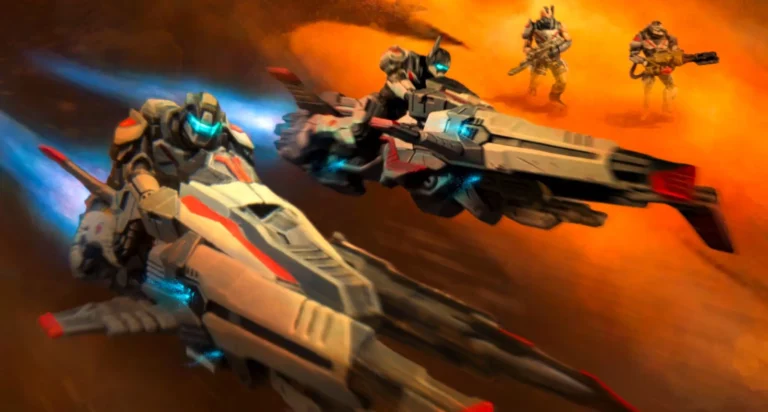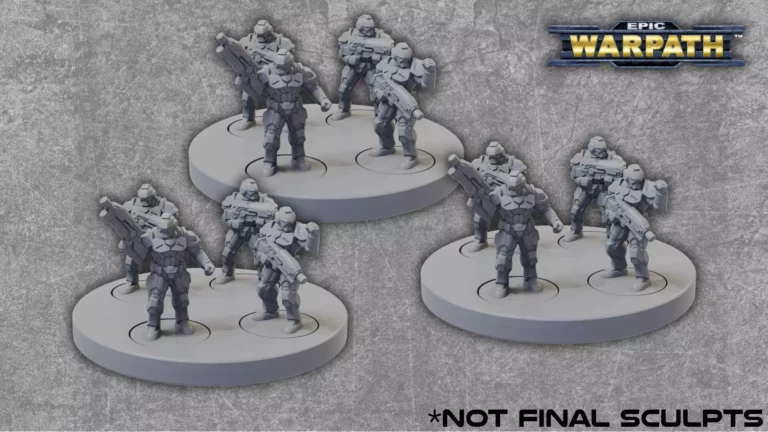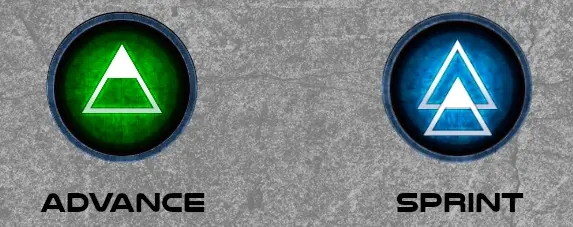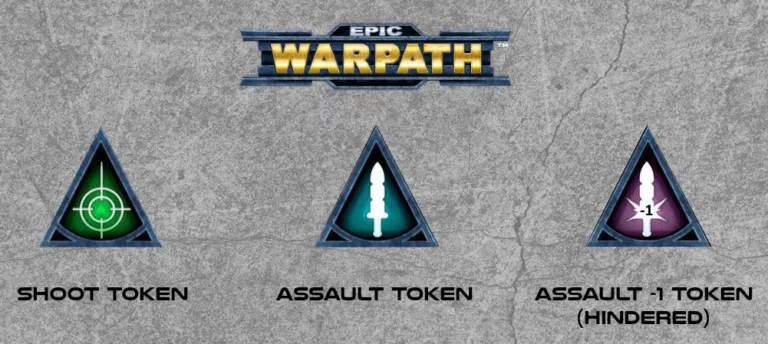EPIC WARPATH: Movement in an Epic Scaled Wargame
6th Dec 2023
Matt Gilbert
Hi everyone,
This is the fourth in a series of EPIC WARPATH blogs heading into the Kickstarter on the 14th February 2024.
You can catch up on the previous blogs here:
You can bookmark the campaign page HERE, and don't forget to hit the 'notify me' button!
In this article we will take a look at the Movement Phase and how Units get around the battlefield.
DISCLAIMER: The game is still in development, so some details might be different in the final product!
The Speed Stat
On its profile of game statistics (stats), every Unit will have an SP value. SP is short for Speed.
The SP stat actually shows two numbers in the format n/n. The first number is how far the Unit can Advance, in inches, and the second number is how far the Unit can Sprint in inches.

Unit Coherency and Moving Around
The Bases within a Unit must stay near each other to act as a whole cohesive group. A Unit cannot have any gaps larger than one inch between its Bases. When a Unit moves, none of the Bases can move further than the Advance or Sprint stat (as appropriate) and must finish back in the one inch coherency.
While friendly Units can move through each other, they can’t intermingle and so must end clear of each other. Units cannot approach within one inch of any enemy Units unless they are Sprinting to engage them in an Assault.

Terrain
Terrain affects different types of Units in different ways. For example, woods don’t impede Infantry and Heavy Infantry, but are Difficult Terrain for Bikes, Walkers and Vehicles.
When a Unit moves through Difficult Terrain, it can only move up to its Advance value on its SP stat, even if it has a Sprint Action Token.
Activating Units
In the Movement Phase, players will take it in turns to Activate their Units that have either an Advance Action Token, or a Sprint Action Token.

The player with the Initiative this Round chooses whether they will be the first player to act or not.
When a player chooses to Activate a Unit, they “spend” its Action Token to do so.
- When a Unit with an Advance Action Token has finished its move, the Advance Token is swapped for a Shoot Token (to spend in the Combat Phase).
- When a Unit with a Sprint Action Token has finished its move the player will either:
- Simply remove the Action Token if the Unit didn’t engage the enemy OR
- Swap the Sprint Action Token for an Assault Token (to spend in the Combat Phase) if the Unit engaged an enemy Unit in base-to-base contact.

Wait…You Said No Tokens?
Almost - we said a clear table at the end of the Round!
By spending tokens in each phase, it helps keep track of which units have activated and which are still to do so. You’ll also notice that the tokens are different shapes, to make it easier to see which Phase they apply to (the triangular ones are only spent in the Combat Phase). Instead of adding Activated Tokens to Units, in EPIC WARPATH, you spend Tokens to activate and then remove that Token from the table. So by the end of the Round, all these Tokens have been cleared away, and you know everything that could have, has been Activated.
Because Units perform actions over a number of phases, the Shoot and Assault Tokens are used to spend on activations later, but also helps players remember what that unit can do (or not) when they get to it.
We’ll look at spending the Shoot and Assault Tokens when we explore the Combat Phase in a future article.
Up Next…
In next week's article, we’ll take a break from the rules and have a look together some new miniatures!
Don’t forget to sign up to the EPIC WARPATH Kickstarter page (click below) to get notified when the project goes live:

 GBP
GBP  EUR
EUR  USD
USD 